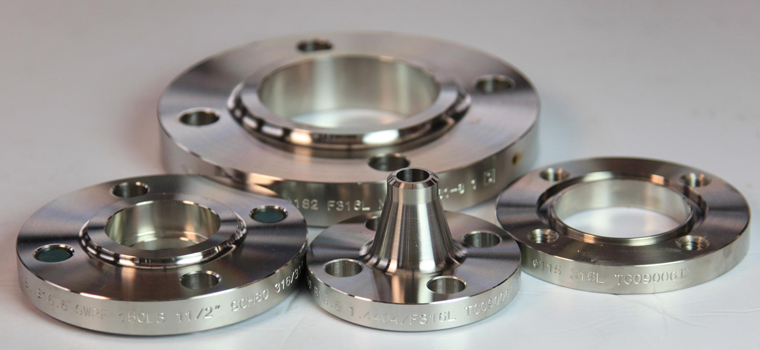
What are Flanges, Its Types and Applications
Flanges provide a durable and reliable way of connecting pipes with valves, pumps and other equipment. Flanges also increase the strength of the connection and enable a good flow in the connection. A flange is either used as an external or internal spreaded out, stiff, lip or rim which helps in providing strength.
Flanges are available in various types some of which are Lap joint flanges, Slip-on flange, socket weld flanges, threaded flanges, Blind flanges, Weld neck flanges, Long weld neck flanges, Reducing flanges, Forged flanges, Orifice flanges, etc. All these Flanges come in a wide range of materials like Stainless steel, Duplex & Super Duplex steel, Nickel alloy, Monel alloy, Hastelloy, Titanium, Carbon, Alloy 20, Aluminum and few more materials. All these materials have different grades, dimensions and specifications as per national standards which also means more variety of flanges.
Applications: Flanges have various applications, different types have different applications.
Lap joint flanges are buttwelded with stub end in the connection, it is used in applications which require maintenance frequently.
Slip-on flanges are used in applications where chances of leakage is low. It comes in a range of sizes to accommodate networks with higher flow rate and throughput.
Screwed flanges commonly known as threaded flanges, have a thread like pattern on it which is fitted with its male thread on the pipe. It can be used in places where welding is to be ignored.
Blind Flanges don't have a hub or bored center. It is used to terminate the end of the piping network. Blind flanges are overstressed flanges due to the internal pressure.
Socket weld flanges are advisable to use in a connection where pressure is comparatively low, connection happens when you place the pipe into the flange and then secure the connection with a single multi-pass filet weld.
Weld neck flanges are favorable for both high and low temperature, it can perform even in high temperature, It requires butt welding for installation.